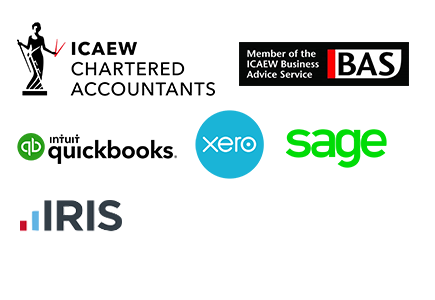
If you invest time and resources into resolving a technological or scientific area of uncertainty that’s holding your business back, you may be eligible to claim R&D Tax Credits for your efforts.
Research and Development tax credits are a government-led initiative to promote innovation by small and medium-sized businesses.
Why would the government support your investment in research and development?
Because small businesses like yours form the backbone of the UK economy. Your advancement equals sustainable growth for the economy as a whole. With this in mind, the government introduced the scheme in 2000 to nurture technological and scientific innovation within the UK.
The idea behind R&D tax credits is to incentivise research and development by allowing small to medium-sized enterprises (SMEs) to pay less tax and instead devote resources to fuelling their growth through research and development. In other words, rather than subsidising SMEs indiscriminately, the government allows individual SMEs to benefit from the scheme through tax credits as a reward for their investment in research and development.
If your business qualifies for research and development tax relief, you will be entitled to a couple of significant benefits. Rather than pay tax on profits after deducting all of your qualifying costs, you will be entitled to deduct an extra 130% of your qualifying costs before tax. This means you deduct a total of 230% of qualifying costs. In addition to this massive boost for your business, you have the added security of claiming a tax credit if you make a loss. In this instance, you would be entitled to a tax credit to the value of up to 14.5% of your surrenderable loss.
Sound interesting? Here’s how to go about claiming tax relief for your research and development work.
Step One: Make Sure You Qualify For R&D Tax Credits
To be eligible for research and development tax relief for small and medium-sized enterprises, you need to meet two important criteria.
- Does your business qualify as an SME?
- Is your scientific or technological project considered research and development according to the definition laid out in the scheme?
First off, does your SME qualify?
You can claim R&D tax credits if your business employs 500 staff or less and has an annual turnover of less than €100 million, or a total balance sheet totally less than €86 million. When you make this assessment, it’s crucial that you take into account the figures of any external investors, partner companies or connected companies your business may have.
If you qualify as an SME, you still need to demonstrate to the government that the work you’ve invested in meets their definition of research and development.
While your first thought may be that pumping money into developing your product must count as research and development, this will not necessarily be the case. The government makes a key distinction between research that draws on the existing knowledge base for purely commercial purposes, and research and development that builds on the existing body of scientific or technological knowledge. On the other hand, your project will not count as R&D if you’re pursuing innovation for innovation’s sake; the project has to have a demonstrable commercial application.

Basically, research and development means investing in commercially productive innovation that pushes the boundaries of everyone’s understanding, thus spurring growth in the economy as a whole, rather than research for the purposes of advancing a singular product.
Before you start inflating your company’s research and development budget, check your project against the following criteria:
- Does your proposed R&D project aim to discover new insights in a scientific or technological field?
- Is your project commercially innovative?
- Does your project draw on scientific research or technology that is not currently used or readily available in your industry?
- Is your project relevant to your trade? (Basically, leave pure research to universities. Your tax credits are awarded for research that’s going to advance your commercial enterprise.)
- Is your business already receiving any form of state aid or subsidy? If so, you will not qualify.
Step 2: Understand Which Costs You Can Claim R&D Tax Credits For
Before you start budgeting for your research & development project, it’s important to understand the restrictions on which types of expenditure you are entitled to claim R&D tax credits for. The key point is that you can claim for expenses that are related to the day-to-day operation of your research and development initiative. You cannot claim for costs related to capital assets, like your property or machinery.
Furthermore, within qualifying expenses there are several categories. These include consumable items such as materials and utilities, software (any relevant license fees) and employee-related expenses for staff working directly on your research and development project. (You can also claim for staff who do not work directly on the project but whose work supports the project, like admin or Human Resources staff, without whom the project would not be possible). For qualifying employees, you can claim a proportion of their wages, Class 1 National Insurance contributions and their pension fund contributions. If you hire an external agency or contractor to help with the project, you will be able to claim 65% of those payments.
Step Three: Work Out When Your R&D Project Starts & Ends
For the purposes of claiming your R&D tax relief, your research and development project kicks off the moment you begin work on resolving that uncertainty. To prove the official start of your project, you will need to show which technical issues you needed to resolve, and demonstrate that you have checked for existing solutions to this problem. (You’re not going to get credits for researching something that has already been discovered!)

Not surprisingly, your R&D project is complete for tax purposes when you have resolved the uncertainty you set out to resolve, or you cease working on the project. For the purposes of your tax relief claim, if you develop a prototype as a result of your R&D, that marks the end of your project. You can reopen your R&D project period if another scientific or technological uncertainty crops up once you have already begun production of your enhanced product.
If this is your first time claiming R&D you may qualify for Advance Assurance, which allows that any R&D claims submitted in your first three accounting periods will be accepted without the need for additional R&D tax credit requirements, given that the projects line up with what was originally agreed.
Note: your start and end date for your R&D project are for the purposes of your claim. Once your project is complete, you have up to two years in which to make your claim.
Step Four: Calculate Enhanced Expenditure
Calculate your expenses that directly relate to your R&D activity. Remember to reduce totals for any external agencies or subcontractors to 65% of the actual payment. Multiply your total by 130% to calculate your additional deduction. Add this figure to your original research and development expenditure. This is the total enhanced expenditure that you use in your tax return.
If you’ve been trading at a loss, you will be able to surrender your loss and claim a corresponding tax credit.
Step Five: Claim Your R&D Tax Relief
You claim your R&D tax credits as part of your tax return. To do this, you will need to enter your enhanced expenditure into the form CT600, the full Company Tax Return form.
Note: if your research and development period spanned over one year, you will be required to submit a separate claim for each accounting period.
Step Six: Support Your Claim
Once you have submitted form CT600, you can use the HMRC online service to submit material supporting your research and development tax relief claim. In order to access the online service, you must have a Government Gateway user ID. If you do not have an account, you will be given an opportunity to create a user ID the first time you visit the site.
To support your claim, you will need the start date and end date of the relevant accounting period, as well as your ten-digit company unique tax reference (UTR) number. You must specify the total amount of tax relief you’re claiming alongside a comprehensive breakdown of your qualifying costs relating to your research and development project. If relevant, you will need to provide your unrelieved trading loss for the specified period.

You may submit supporting evidence for up to ten projects. For one to three projects, you will be required to supply supporting evidence for all the projects you carried out. If you did more than four projects, you’ll need to describe in detail at least three of your projects, which cover over 50% of your total R&D qualifying costs.
Along with the above information, it’s useful to provide a research and development project summary to assist the HMRC in their decision. In your summary, it is advised that you specify the area of technological or scientific uncertainty your R&D project addressed and that your project was carried out in order to find a solution. It’s important that you specify that a solution to your problem was not readily available in the existing literature, and that a professional in a relevant field could not easily have worked out the issue.
Now that you’re aware of how to claim business tax relief, don’t let this opportunity pass your business by. With £1.5 billion of tax relief available per year in the UK, make sure you claim your rightful share of this national investment.









